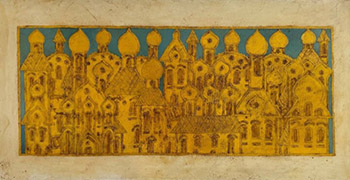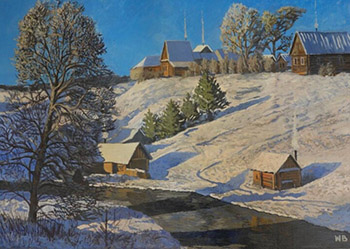




Painting has always served as a powerful means of expression, and contemporary Russian art is no exception. With its rich history and cultural depth, current Russian painting conveys the complex aspects of society, identity, and emotions. This article examines the experience of creating modern Russian works, focusing on the influences, methods, and emotional journeys that artists undergo in their creative process.
Cultural Canvas
Contemporary Russian painting is deeply intertwined with the tumultuous history of the country, reflecting the social, political, and cultural changes that have shaped modern Russia. Artists draw inspiration from a multitude of sources, including traditional Russian folklore, avant-garde movements of the early 20th century, and the challenges faced in contemporary life. This cultural canvas serves as a rich backdrop for artists exploring issues of identity, nostalgia, and resilience.
For many creators, the journey begins with productive engagement with their cultural heritage. These artists may delve into the study of various historical art movements or recall youthful impressions tied to specific places or events. Such exploration often generates a desire to reimagine classic motifs through a modern lens, merging the past and present with innovative approaches. As a result of these creative efforts, an original combination of styles emerges, reflecting both personal and collective experiences.

Emotional Layering
Creating contemporary Russian artworks represents a profound emotional journey. In this process, artists frequently grapple with questions of their identity and personal experience while also addressing broader social issues. The act of painting becomes a tool for processing complex emotions—joy, sadness, anger, and hope. Many contemporary Russian artists use their works as a platform to discuss pressing social issues such as political crises, economic hardships, and the quest for freedom.
During their creative activities, artists encounter a multitude of different emotions. Strikes of inspiration can be truly magical, while moments of doubt and frustration occur quite frequently. The task is to channel these experiences into their art. This process can be cathartic; it allows artists to confront their emotions and express them visually, creating a connection with viewers who may experience similar feelings.

Methods and Materials
Contemporary Russian artists employ a wide range of techniques and materials, reflecting their unique styles and artistic viewpoints. Some prefer the classic method of oil painting, while others explore mixed media, incorporating photography, textiles, or found objects into their works.
Color holds an important place in contemporary Russian art, merging emotions and meanings. Bright hues can evoke powerful feelings, while soft palettes may inspire thoughts of self-reflection or sorrow. Additionally, the choice of composition plays a crucial role in perception: dynamic compositions create a sense of tension, whereas balanced elements can evoke a feeling of harmony.

Communities and Interactions
The art scene in Russia today is vibrant and alive; many artists actively collaborate and engage in dialogues with one another. Collectives, exhibitions, and workshops foster a sense of community among creators, providing platforms for the exchange of ideas and techniques. This collaboration enriches the creative practice, allowing artists to learn from each other and discover new perspectives on their works.
The exhibition of their own works can become a transformative stage for contemporary Russian artists. By presenting their pieces to a wide audience, they open new horizons for communication and discussions. Audience feedback can provide valuable insights and encourage further exploration in their creative activities.
Conclusion
The creation of contemporary Russian paintings is a multifaceted journey that combines personal expression with cultural commentary. Artists explore the intricate world of emotions, techniques, and influences, embodying their visions on canvas.
Get access to special offers, exclusive promotions, and unique promo codes available only to our subscribers. Along with that, stay updated on the latest global art news and receive fresh insights and announcements from Baranow Art Gallery.